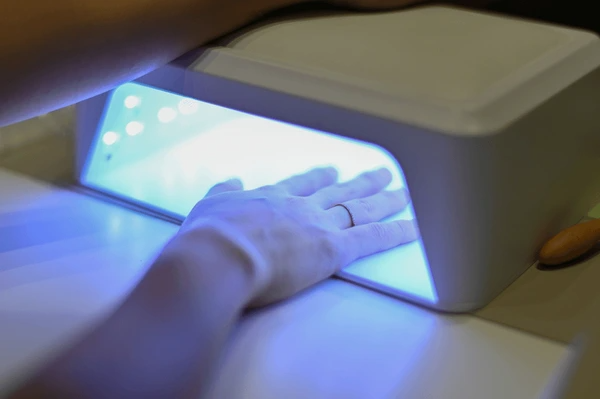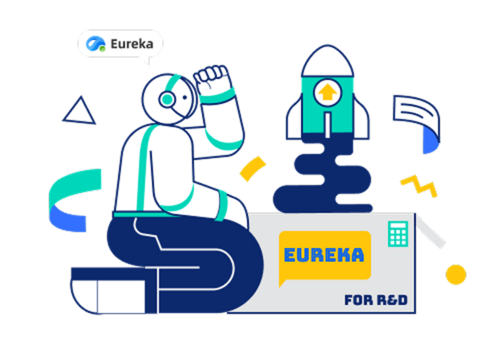
Ultraviolet (UV) LED technology has rapidly evolved into a reliable, energy-efficient, and compact alternative to traditional mercury-based UV lamps. With the ability to emit precise UV wavelengths, UV LEDs are now used in a wide range of industrial, medical, and scientific applications — from sterilization and curing to counterfeit detection and phototherapy.
This article explores how UV LEDs work, the different wavelength categories, their power and efficiency levels, and the most significant industrial uses of UV LED light.
What Is UV LED Light?
UV LED (Ultraviolet Light Emitting Diode) light refers to solid-state devices that emit ultraviolet radiation in the 100–400 nm range. Unlike incandescent or fluorescent UV sources, UV LEDs use semiconducting materials like aluminum gallium nitride (AlGaN) to produce UV light without toxic substances or high operating temperatures.
UV LEDs are compact, durable, and emit narrow-band UV radiation, allowing high-precision applications in industrial and scientific fields.

UV LED Wavelength Categories
The ultraviolet spectrum is divided into three main regions, and UV LEDs are typically engineered to emit within these:
1. UVA (315–400 nm) – Long-Wave UV
- Most common in UV LEDs
- Also called “black light”
- Applications: Curing, printing, counterfeit detection, cosmetics curing, forensic inspection
2. UVB (280–315 nm) – Medium-Wave UV
- More energetic than UVA
- Used in medical treatments (e.g., phototherapy), skin care devices, vitamin D synthesis
3. UVC (200–280 nm) – Germicidal UV
- Highly energetic
- Destroys DNA/RNA in pathogens
- Applications: Sterilization, disinfection, water purification
Note: UVC LEDs are more expensive and less efficient than UVA, but their importance in hygiene and safety is growing.
Power and Efficiency of UV LEDs

UV LEDs are rated based on output power (measured in milliwatts or watts) and wavelength precision.
Key Performance Metrics:
- Output Power: Typically ranges from 5 mW to several watts
- Wall Plug Efficiency (WPE):
- UVA LEDs: 10–50%
- UVB LEDs: 2–8%
- UVC LEDs: 1–5%
- Beam Angle: UV LEDs have directional output, eliminating the need for reflectors
Factors Affecting Power Output:
- Wavelength (shorter = less efficient)
- Thermal management (heat reduces performance)
- Semiconductor material quality
- Drive current and packaging
Advantages of UV LED Over Traditional UV Lamps
| Feature | UV LED | Mercury UV Lamp |
|---|---|---|
| Toxicity | No mercury | Contains toxic mercury |
| Startup Time | Instant-on | Requires warm-up |
| Lifetime | 10,000–50,000 hours | ~1,000–5,000 hours |
| Energy Efficiency | High | Moderate |
| Thermal Output | Low | High (requires cooling) |
| Form Factor | Compact, solid-state | Bulky, fragile |
| Control | Easy to dim and pulse | Difficult to modulate |
Industrial Uses of UV LED Light
UV LEDs are rapidly replacing mercury lamps across numerous sectors due to their safety, efficiency, and compact design.
1. UV Curing
- Applications: Inks, coatings, adhesives, resins
- Benefits: Faster curing, reduced VOCs, energy savings
- Industries: Printing, electronics, automotive, packaging
2. Disinfection and Sterilization
- UVC LEDs kill bacteria, viruses, and fungi by damaging DNA.
- Applications: Water purification, air disinfection, surface sterilization
- Use Cases: Hospitals, HVAC systems, consumer appliances, public restrooms
3. Medical and Dermatological Applications
- UVB LEDs treat skin conditions like psoriasis and vitiligo.
- UVC LEDs are explored for surgical tool sterilization and infection control.
4. Analytical and Forensic Detection
- UVA LEDs are used in:
- Fluorescence spectroscopy
- Currency and document authentication
- Biological sample detection
5. Photolithography and Semiconductor Processing
- UVA and UVC LEDs used in wafer patterning and microfabrication.
6. Environmental Monitoring and Sensing
- UV LEDs power sensors for detecting pollutants like ozone, NOx, and sulfur compounds.
| Product/Project | Technical Outcomes | Application Scenarios |
|---|---|---|
| Novel Aminoketone Photoinitiator Tianjin Jiuri New Materials Co., Ltd. | Efficient photocuring in 365-395nm range, overcoming limitations of single wave peak UV-LED sources | UV-LED curing systems for industrial applications requiring low energy consumption and reduced pollution |
| Two-sided Surface Light Source Device Seoul Viosys Co., Ltd. | Even illumination and cost-effectiveness, enhanced light distribution and durability | Industrial UV curing, printing, and manufacturing processes requiring uniform UV light distribution |
| UV LED Curing Apparatus Nail Alliance, LLC | Safe and efficient nail hardening for multiple fingers or toes, automatic operation with user interaction | Nail salons and beauty industry for UV gel nail curing |
| Non-Uniform Lens Array Excelitas Canada Inc | Enhanced uniformity and irradiance across combined LED modules, addressing irradiance dip in abutting regions | UV photo-curing applications in manufacturing and industrial processes requiring uniform light distribution |
| Slim Insect Trap Seoul Viosys Co., Ltd. | Wide-angle UV LED emission, quiet and efficient operation with adjustable settings | Commercial and industrial pest control in food processing facilities and warehouses |
Challenges of UV LED Technology
Despite rapid progress, UV LEDs face several challenges:
1. Lower Efficiency at Short Wavelengths
- UVC LEDs are less efficient and have shorter lifespans compared to UVA.
- Ongoing material research is addressing this limitation.
2. Thermal Management
- UV LEDs generate heat that must be dissipated to maintain output and lifespan.
3. Cost
- UVC and UVB LEDs are still more expensive than traditional lamps, though costs are dropping with scale and innovation.
4. Material Degradation
- High-energy UV light can degrade plastics, coatings, and even the LED encapsulant material over time.
Safety Considerations
- Eye and skin protection is necessary when working with UV LED, especially UVB and UVC.
- Use enclosed systems, shielding, and UV-blocking lenses.
- UVC should never be viewed directly — even brief exposure can damage eyes and skin.
Future of UV LED Technology
The UV LED industry is poised for massive growth, driven by advancements in:
- High-output UVC LEDs for large-scale disinfection
- Portable sterilization devices (UV pens, water bottles, phone sanitizers)
- Advanced phototherapy systems
- Miniaturized sensors for smart wearables and diagnostics
- Quantum dot and phosphor-converted UV sources for tunable spectral outputs
Global demand for mercury-free, energy-efficient disinfection solutions is accelerating innovation across healthcare, consumer electronics, and industrial design.
Conclusion
UV LED technology represents a major shift in ultraviolet applications, offering safer, more efficient, and versatile solutions than traditional UV lamps. From UVA-based curing to UVC sterilization, the ability to fine-tune wavelength and intensity makes UV LED essential across medical, industrial, and environmental domains.
As efficiency improves and costs fall, UV LED will become increasingly central to clean energy, public health, and advanced manufacturing technologies.
FAQs
They typically emit in the UVA (315–400 nm), UVB (280–315 nm), or UVC (200–280 nm) regions.
With proper shielding and exposure control, yes. Direct exposure to UVB/UVC can harm eyes and skin.
Yes. UVC LEDs are effective in killing bacteria and viruses in water, air, and on surfaces.
Depending on wavelength and usage, they last 10,000 to 50,000 hours, especially for UVA.
Yes. UV LEDs offer instant-on, targeted wavelength emission, longer life, and higher electrical efficiency.
To get detailed scientific explanations of UV LEDs, try Patsnap Eureka.


